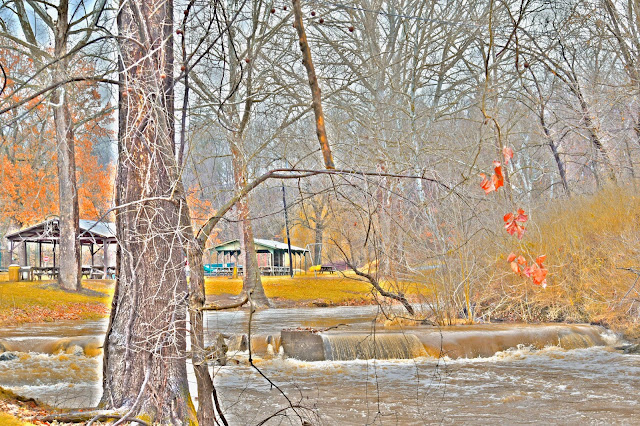These dried-up leaves that cling into winter, now rain-glistened, reflecting the sun breaking through, are memories turned harbinger, breakthroughs into the timeless. They make candles for grey times. They manifest hope--if we have eyes to see it. Let’s look into and through the candle flames.
After all, “The Clue is Beauty.” This is the title given by Pir Vilayat Inayat Khan to a chapter in that which Transpires Behind that which Appears elaborating on this glance from and toward Beauty:
“. . . your consciousness is a reflection, a projection, of the divine consciousness. So, we thought we got there when we imagined we were an extension of the divine glance—but there is always something beyond it. This is where we move into transcendence, because, of course, we cannot limit God to the divine immanence… That is why al-Hallaj said How do you think that you can confer upon God a mode of knowing? In one stroke of his transcendental knowledge he can shatter any knowledge that you think you have and replace it with a whiff of his understanding that you can never hold. It will dissolve before you have thought you have experienced it… There is a still deeper experience of God, beyond all that we have been talking about; and that is the divine presence. It is not limited by the qualities; it is not predicated by the qualities. . . the ultimate realization comes when you discover that you are that presence. That is the ultimate secret, and that is a clue to the power… [which leads to success in] the pursuit of excellence…” (pp. 44-45)Even a leaf fallen, yet floating still, now in ripples, and
then finding a lacework of ice pattern reminds us of the intricate design making all God’s on-going creation a marvel of beauty. Our fleeting glances into the manifestation of Beauty offer for each one of us a pathway, illuminated moment by moment, step by step, in which we may
“enter into the heart of religion by studying first the phenomena and then deeper and deeper layers of human responses to the Divine until [each one] reaches the innermost sacred core of each religion, the centre, the Numinous, the deus absconditus. . . That is, the highest spiritual experience can be triggered off by a sensual object: a flower, a fragrance a cloud or a person. . . These signs are not only in the ‘horizons’, that is, in the created universe, but also in the human souls that is, in the human capacity to understand and admire; in love and human inquisitiveness; in whatever one may feel, think, and experience. The world is, as it were, an immense book in which those who have eyes to see and ears to hear can recognize God’s signs and thus be guided by their contemplation to the Creator Himself.” Annemarie Schimmel, Deciphering the Signs of God, p. xii.




No comments:
Post a Comment